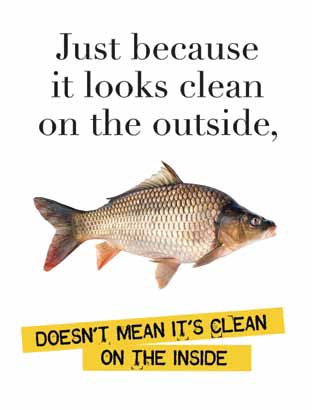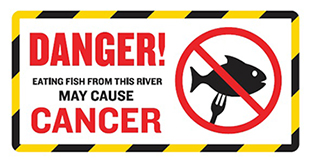Study Reveals D.C. Community near Anacostia River Are Eating and Sharing Contaminated Fish
NOV. 20, 2012 — An extensive study partly funded by NOAA has found that nearly half of the people living near Washington, D.C.'s Anacostia River are unaware of the dangers of eating its fish. The results are prompting a reexamination of how to communicate these important public health risks to a diverse, multilingual, and urban community. The report uncovered further evidence that many local fishermen—who were disproportionately African American, Latino, or Asian—are catching, eating, and sharing potentially contaminated fish with family, friends, and others, greatly expanding the possible long-term health risks to the public. The study estimated some 17,000 people living near the Anacostia could be eating these polluted fish. "Our research confirmed that contaminated fish are, indeed, being shared in the community," said Steve Raabe of OpinionWorks, the company that did the survey. "What we could not have known, prior to embarking upon this effort, is the extent to which this sharing happens and the complex set of factors that drive it."

A Dirty History
The Anacostia River, which runs through Maryland and the District of Columbia, has suffered from decades of pollution, mainly from runoff and hazardous waste sites. NOAA has been partnering to evaluate, clean up, and restore the Anacostia watershed since the late 1990s. One of the most notable chemical pollutants in the river is polychlorinated biphenyls (PCBs), which have immune, reproductive, endocrine, and neurological effects, and may cause cancer and affect children's cognitive development. This and other chemicals build up in the river bottom, where they make their way up the food chain and become stored in the tissues of fish, posing a health threat if people consume them. Even though the District of Columbia and Maryland have been issuing warnings about eating Anacostia River fish for more than twenty years, the majority of fishermen and community members surveyed were not aware of these advisories. While both governments tell the public not to eat any channel catfish or carp, this report exposed that these are some of the most commonly caught fish in the river. Furthermore, over half the fishermen reported that "knowing about such a health advisory" would not change whether or how they ate their catch. Researchers found at least two misunderstandings playing into this. One was the fishermen's mistaken belief that they would be able to see contamination on the outside of the fish. Another was their assumption that getting "sick" from the fish would be immediate, in the form of food poisoning, instead of a future risk of cancer.
Hungry Now or Sick Later?
A particularly surprising result from the study was that fishermen along the Anacostia River often are approached by people who ask them to share fish because they do not have enough food. "They will ride around in their cars and look to see if we’re catching fish and ride up and ask, 'Have you caught anything today? Are you going to keep them?'" said one Anacostia fisherman interviewed during the study about sharing his catch with those lacking food.

The community's apparent lack of access to enough affordable food complicates the task of merely delivering a better message about health risks. "The answer to this problem will be far more complex than simply telling anglers not to share their catch," said Raabe. "How can you tell someone who is hungry today not to eat fish that may pose future health risks?" With almost three-quarters of fishermen eating or sharing the fish they catch, those involved in the study are looking at a broad range of possible fixes to this complex problem:
- Improving health-risk messages to those most affected.
- Creating more and better opportunities for education, such as fishing tournaments.
- Introducing healthier alternative protein options to the community, through aquaponics ("a farming technique that grows plants and fish in a recirculating environment") and local fish subscription services (akin to community supported agriculture programs).
- Increasing the amount of city food gardens and farmers markets in the area.
Along with NOAA, the following organizations were involved in this study: Anacostia Watershed Society, the Chesapeake Bay Trust, Anacostia Riverkeeper, District Government, U.S. Fish and Wildlife Service, and the U.S. Environmental Protection Agency. You can download the complete report at www.anacostiaws.org/fishing, read about ways to reduce exposure to chemical contaminants when eating fish, and learn about efforts to cleanup and restore the Anacostia.
 An official website of the United States government.
An official website of the United States government. 
